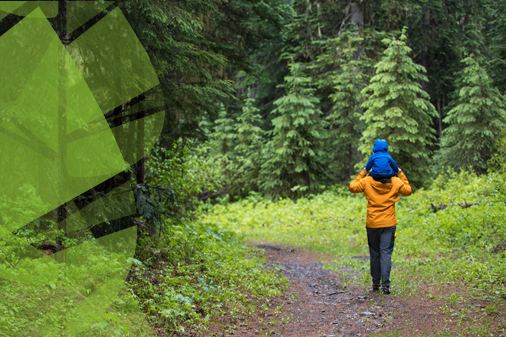What it takes to plant a tree
While planting a tree might seem simple, doing it on a large scale – and in a sustainable, inclusive manner – requires careful planning to ensure the right tree is planted in the right place, for the right reasons. It takes many steps and dozens of people to make it happen. This process takes several years.
A step-by-step process
Planting a tree starts with a piece of land and a plan. Figuring out the right tree for the right place means carefully considering the soil and the ecosystem where the tree will make its new home.
There are also landowner objectives to consider. Is the purpose to create a large canopy in a city street? The restoration of damaged ecosystems? Better biodiversity in agricultural settings? Reducing wildfire risks? These questions and many more take a comprehensive plan to identify the trees themselves, and what activities will be needed to ensure their health and survival. A tree species native to Canada is usually best, but in some circumstances, such as in cities, a non-native species may make sense.
Next up, seeds of the various tree species need to be sourced and collected, then planted and grown as seedlings in nurseries for several years until they are strong enough to plant and survive in their new environment. At the same time, the land identified needs to be prepared for planting – this can involve anything from soil remediation, to the removal of old debris, to creating a temporary access road, to many other factors depending on the land and geography. Only then can the tree-planting take place.
Still, this isn’t even the final step. In many cases, whether they are city trees, planted on land previously used for other purposes, or forest trees, monitoring the health and survival of the planted seedlings has to continue after planting. This allows any further actions needed to ensure the trees continue to mature.
Tree planting timeline – a snapshot

Text version
- Year 0 - Land owner decides to plant trees: Provinces, territories, municipalities, for-profit, not-for-profit, or Indigenous organizations support planting trees and define objectives and timing
- Year 1 - Seed collection: Seeds of the desired species need to be collected or acquired, if not already available
- Years 1-3 - Seedling growth in nurseries: Seedlings are grown in the nursery until the tree is ready to plant (typically 1-3 years for reforestation trees but up to 10 years for urban trees)
- Year 2-3 up to year 15 (urban trees) - Site preparation: 6-12 months before planting a tree, site preparation creates the right planting conditions to increase seedling survival.
- Year 2-3 up to year 15 (urban trees) - Tree planting: The tree is planted
- Each year - Post planting monitoring and management: Monitoring starts for health and survival rate. Measures can be taken to ensure better survival rates, such as managing competing vegetation when tree survival is threatened in early years.
- Years 7+ - Seedling free to grow: Seedling has matured and will continue growing on its own

Several factors must be considered when determining which species to plant where;
- Which ecozone, forest region, or plant hardiness zone is being considered?
- How are species adapting to changing tree ranges?
- What natural disturbances are in play?
- What pests are in the region?
Canada’s State of the Forests report offers a national snapshot of the social, economic and environmental status of forests and forestry in Canada.